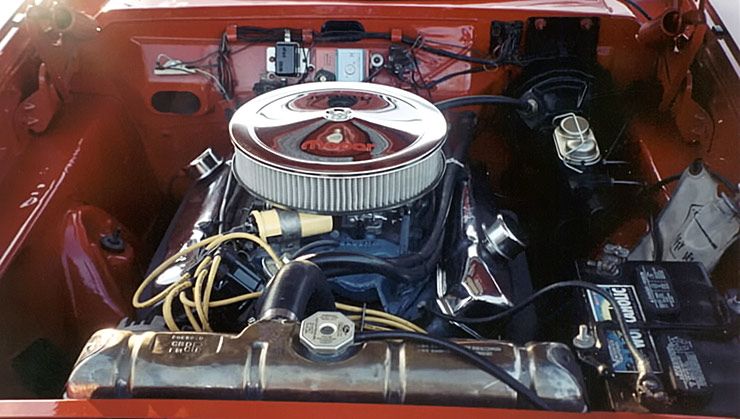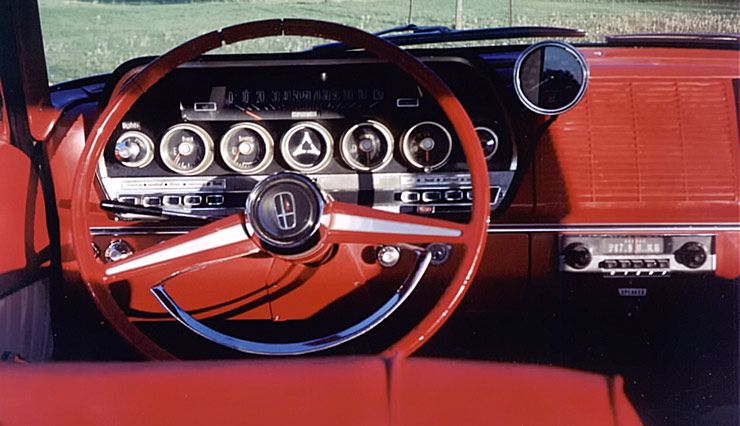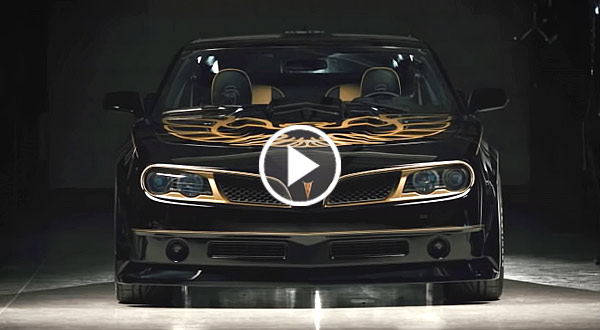Back in 1962, a muscle car wasn’t an intermediate vehicle with a full size engine and transmission. The brawny beasts with big cubes came in large cars with names like Galaxie and Impala SS. The industry wasn’t completely sold on compact cars. They kept some irons in the fire with the Falcon, Chevy II and Valiant, but the real profits lay in big cars.
Chrysler Corporation was in transition with their image. After sensational sales of the their “suddenly it’s 60” line of finned wonders, the new products for 1962 were completely different.
The Fury was Plymouth’s macho performance car during that era. The incredible 1957 model with the dual carbed V8, special paint finish and anodized trim was a knockout and the body style found fame as the star of “Christine” in Stephen King’s novel.
For 1962, Virgil Exner had plans to release a series of long, low and wide cars with asymmetrical styling cues. The Fury was one of those models. Then something funny happened. At a car industry meet and greet, a Plymouth executive overheard GM executives talking about a new small, mainline car they were rolling out for 1962. The dimensions were petite and this spooked Chrysler into launching a crash program to redesign their Plymouth Fury and Dodge Polara.
Exner drastically scaled down the cars and the asymmetrical details were tossed to make it look cleaner. It lost eight inches and 550 pounds. The new Sport Fury was short by contemporary standards. When stacked against the 1962 Impala and Galaxie, which were still full size and gorgeous to boot, panic ensued at Chrysler. It turned out the small car those GM boys were talking about was the Chevy II, a competitor to the 1960 Plymouth Valiant.
The short Fury body style was only around for two seasons before Plymouth returned to a larger format in 1964 and Fury actually became Plymouth’s biggest seller for eight years. American production of Sport Furys was very low with just 4,039 made in ’62. Canadian production at Windsor was even smaller. American Sport Furys were available with powerful 383 or 413 Wedge engines. The biggest V8 option for the Canadian market was the 361 Golden Commando four barrel. It pumped out 305 horsepower, which was pretty good at the time.
This stunning example belongs to Mike and Lynn Boyd of Georgetown, Ontario. Mike first saw this car way back in 1967 while he was in senior year of high school. The superb lines of this taut cruiser grabbed his imagination and he had visions of racing it at the drag strip. As luck would have it, Mike bought the car in spring of 1970 from owner number two. The car had been in a minor accident and needed some repairs. Mike fixed it and attended the opening day ceremony at Golden Horseshoe Drag strip in Limehouse, Ontario, in 1970. Being car #1 gained Mike a lifetime pass to the drag strip and he put it to good use, cutting a best ET of 15 seconds flat with just a race cam, Holley 750 carb, Hooker headers and a 2.76 axle! Mike painted the car black to show off the chrome and white side trim.In 1973, Mike rebuilt the engine to stock condition and pretty much babied the car with long term storage while he got seriously into Corvettes. It was 1991 before Mike reactivated the Sport Fury. He discovered some rust in the cowl area. Mike took it to Danny’s Auto Collision in Norval for repairs, block sanding and primer. Barry Allen of Milton Auto Collision resprayed it in red. A fine reproduction red and white upholstery kit from Legendary Auto Interiors was installed by Ed Maan. The engine was bored out to 383 cubic inches with custom pistons and was assembled by Ray Russiani at Georgetown Tire Craft.
The Canadian cars differ from the American ones. Windsor built cars used Dodge dashboards and had different tricolor carpets from the American cars. Mike’s car originally had red, white and black flecks, unlike the US examples which were red and black only. Another oddity is the front grille guard. It was a 1961 item the plant installed on Mike’s car to use up remaindered stock. American Sport Furys had black and chrome grilles, but the Canadian ones used a chrome grille. The optional “Sport Sweep Styling” spears with white painted inserts were added mid year to entice buyers with extra luxury. It was the same deal with the triple tail lamps and most likely why Mike’s car has a grille guard. This car was built in September ’62, possibly one of the last 62s made before retooling shutdown.
Today, it’s a great example of early big block muscle.















Facebook Comments